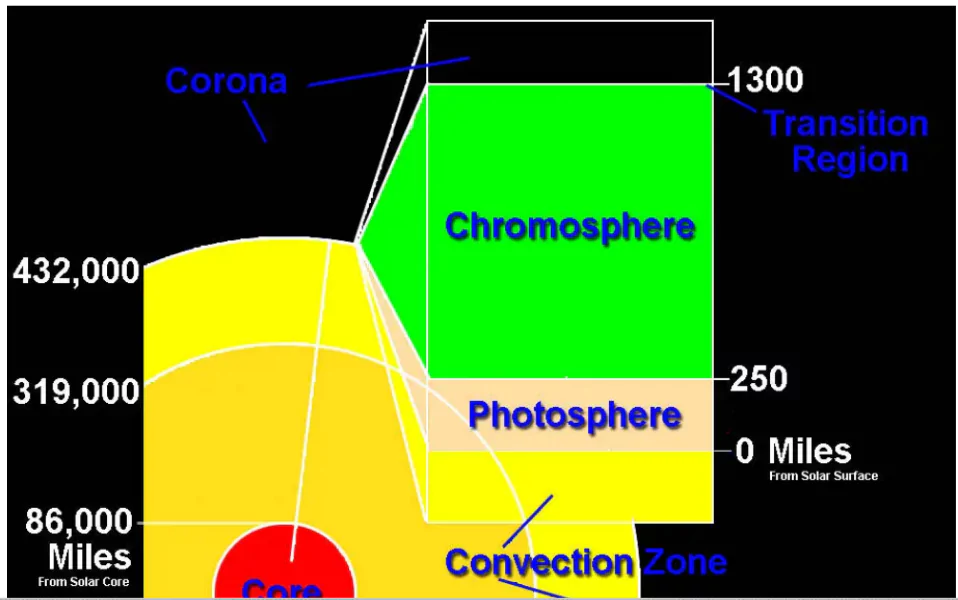A new way to know more about the sun’s secrets by studying its magnetic field at different layers of the solar atmosphere has been found by the astronomers at the Indian Institute of Astrophysics (IIA).
About The Study On Sun’s Magnetic Field
- Published In: The study was accepted for publication in The Astrophysical Journal.
- Subject: The astronomers examined an active region (sunspot) with complex features, including multiple umbrae and a penumbra, through simultaneous observations in the Hydrogen-alpha (Ha) at 6562.8 Angstroms (Å) and Calcium II at 8662 Å lines
- The study used data from multiple spectral lines acquired simultaneously to infer the magnetic field’s stratification at various heights of the solar atmosphere
Enroll now for UPSC Online Course
- Method: The observation Method used for the study is known as Simultaneous Multi line Spectropolarimetry.
- The technique’s capability has already been demonstrated in other studies to detail the magnetic structure of sunspots, umbral flashes, and chromospheric variations during solar flares.
- Objective: To understand the physical mechanisms behind the processes on the sun’s surface and its layers like the ‘coronal heating problem’ and sunspots etc, measurements of magnetic fields at different heights of the solar atmosphere is important.
- The strength of the magnetic field can be inferred by precise measurements of the spectral line intensities across the Sun in full polarization.
- Data Source: The astronomers have used data from IIA’s Kodaikanal Tower Tunnel Telescope situated at the Kodaikanal Solar Observatory.
- The Kodaikanal Solar Observatory (KoSO), operated by the Indian Institute of Astrophysics, is known for the discovery of the Evershed Effect in 1909
- Findings of the Study:
- Magnetic field layers: The study found the values of magnetic fields to be 2000 G at the photosphere and 500 G at the chromosphere.
- The Hα line: It is less sensitive to local temperature fluctuations and thus becomes crucial to infer the chromospheric magnetic field because it allows to probe the chromospheric magnetic field in events with sudden temperature fluctuations, such as flaring active regions
- Other spectral lines, such as Calcium II 8542 Å, are efficient in probing deeper layers of the solar atmosphere.
- The results indicate that the Hα line core consistently infers weaker magnetic field strengths than the Ca II 8662 Å line inversions, suggesting that the Hα line samples higher atmospheric layers than the Ca II IR triplet.
- Importance:
- Chromospheric Magnetic field’s Stratification: The study with a multi-line approach is crucial for understanding the intricate magnetic field stratification in the chromosphere by necessitating further spectropolarimetric observations of the Hα line using advanced telescopes with superior spatial and spectral resolution.
- Example: Telescopes like the National Large Solar Telescope (NLST, built in Merak village in Ladakh in India) can provide further deep knowledge into the chromospheric magnetic field’s stratification
- Future Scope: This study is a remarkable step towards a more detailed and holistic understanding of the Sun’s magnetic field, paving the way for future studies and observations to unravel the complexities of solar magnetic phenomena further.
Layers of Sun

- Sun is composed of The inner layers ( Core, Radiative Zone and Convection Zone) and The outer layers (Photosphere, the Chromosphere, the Transition Region and the Corona)
- Photosphere: The photosphere is the surface ayer of the Sun that can be observed directly and reaches from the surface at the center of the solar disk till about 250 miles (400 km) above that. The temperature in the photosphere varies between about 6500 K at the bottom and 4000 K at the top
- Chromosphere: It spans between about 250 miles (400 km) and 1300 miles (2100 km) above the photosphere. The temperature here varies between about 4000 K at the bottom (temperature minimum) and 8000 K at the top, thus it gets hotter as we move up.
- Corona: The corona is the outermost layer of the Sun starting at about 2100 km above the solar surface. The temperature in the corona is 500,000 K up to a few million K.
- The corona cannot be seen with the naked eye except during a total solar eclipse, or with the use of a coronagraph. The corona does not have an upper limit
|
Check Out UPSC CSE Books From PW Store
Sun Magnetic Field
- The sun is made of plasma (a gas-like state of matter in which electrons and ions have separated, creating a super-hot mix of charged particles) and when these charged particles move, they naturally create magnetic fields
- Process: The process of the creation of the Magnetic Field is known as The Solar Dynamo, whereby The plasma sets up a complicated system of cause and effect in which it flows inside the sun churned up by the enormous heat produced by nuclear fusion at the center of the sun
- Measurement:
-
- Magnetograph: Magnetic loops can be more precisely measured on the photosphere using an instrument called a magnetograph, which measures the strength and direction of magnetic fields.
- Simulation Models: Simulations such as the Potential Field Source Surface ( PFSS) model helps picture exactly how magnetic fields undulate around the sun.
- They can provide a good idea of what the solar magnetic field looks like in the sun’s corona and even on the sun’s far side.

|
![]() 23 Aug 2024
23 Aug 2024
